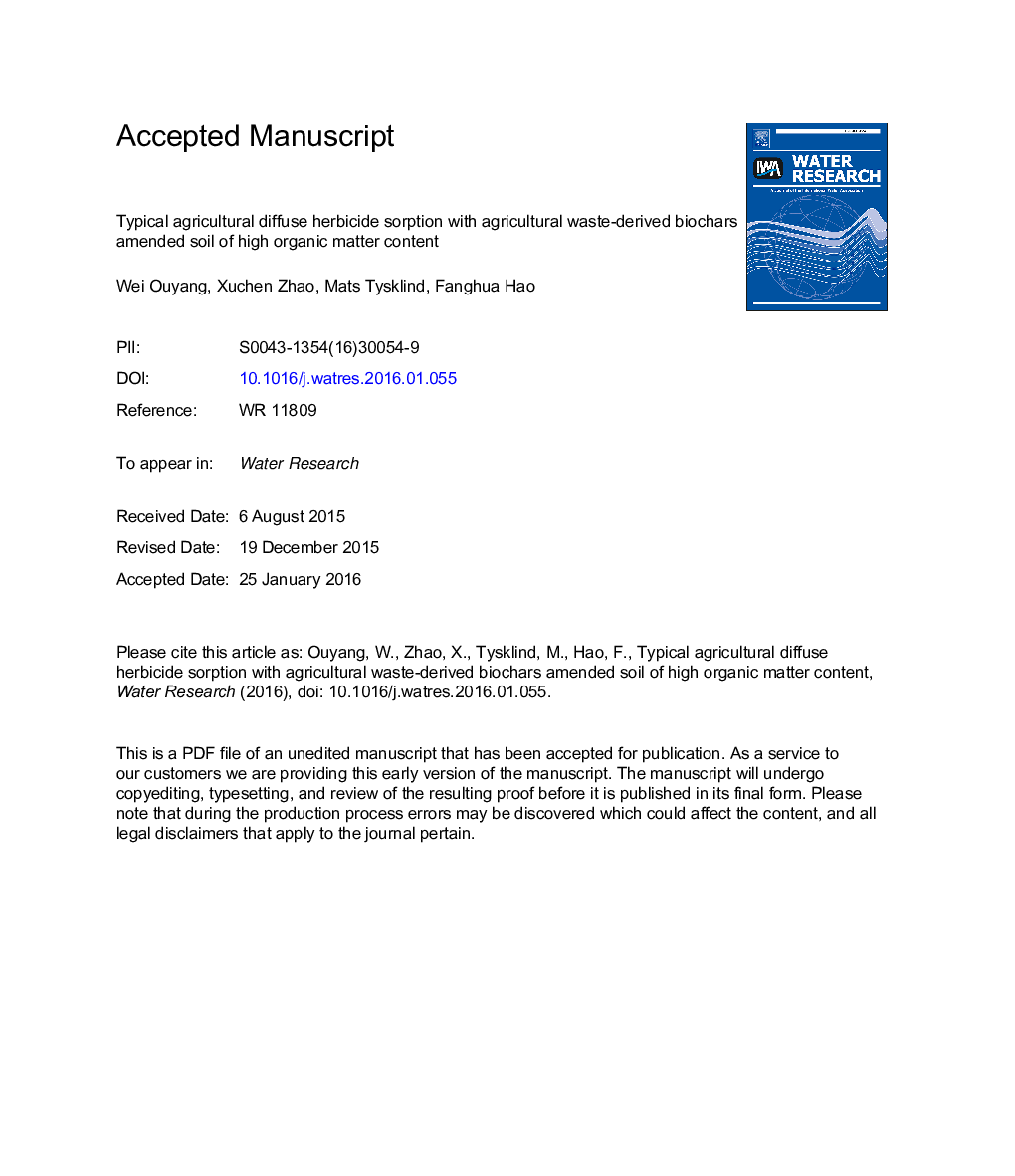| Article ID | Journal | Published Year | Pages | File Type |
|---|---|---|---|---|
| 6365261 | Water Research | 2016 | 18 Pages |
Abstract
Biochar application has been identified as the effective soil amendment and the materials to control the diffuse herbicide pollution. The atrazine was selected as the typical diffuse herbicide pollutant as the dominant proportion in applications. The biochar treated from four types of crops biomass were added to soil with high organic matter content. The basic sorption characteristics of biocahrs from corn cob (CC), corn stalk (CS), soybean straw (SS), rice straw (RS) and corn stalk paralyzed with 5% of ammonium dihydrogen phosphate (ACS) were analyzed, along with the comparison of the sorption difference of the raw soil and soil amended with biochars at four levels of ratio (0.5%, 1.0%, 3.0% and 5.0%). It was found that the linear distribution isotherm of raw soil was much effective due to the high organic matter background concentration. The addition of five types of biochars under two kinds of initial atrazine concentration (1Â mg/L and 20Â mg/L) demonstrated the sorption variances. Results showed the soil amended with RS and CS biochar had the biggest removal rate in four regular biochars and the removal rate of the ACS was the biggest. The sorption coefficient and the normalized sorption coefficient from Freundlich modeling presented the isothermal sorption characteristics of atrazine with soil of high organic matter content. The normalized sorption coefficient increased with the equilibrium concentration decreased in the biochar amended soil, which indicated the sorption performance will be better due to the low atrazine concentration in practice. Results showed that biochar amendment is the effective way to prevent leakage of diffuse herbicide loss.
Related Topics
Physical Sciences and Engineering
Earth and Planetary Sciences
Earth-Surface Processes
Authors
Wei Ouyang, Xuchen Zhao, Mats Tysklind, Fanghua Hao,
